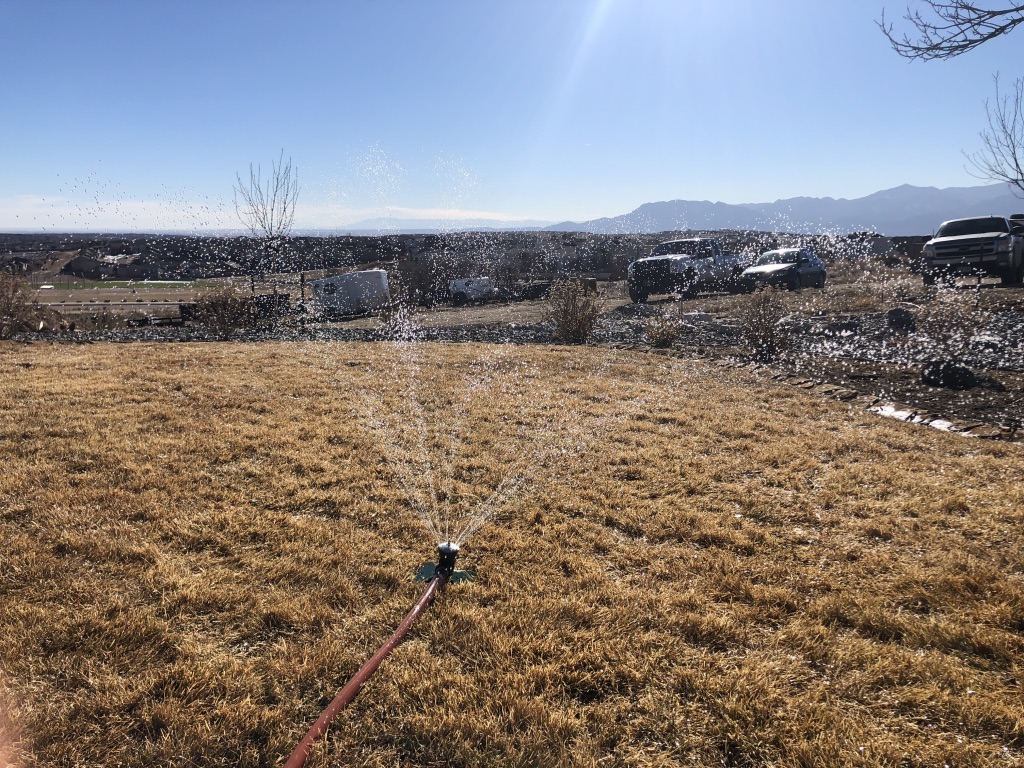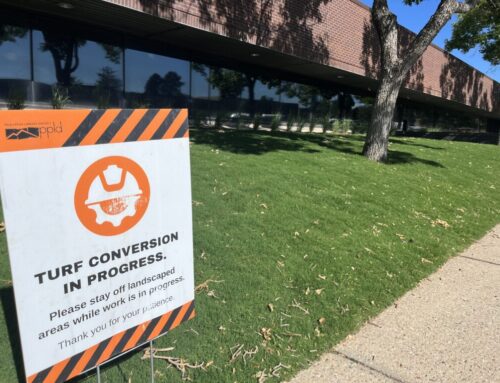Although your irrigation system should be winterized and off from November to April, your plants, trees, and lawn still need water in these winter months. Snowfall can provide some of the moisture they need, but winter watering is crucial.
Why Water?
Throughout the winter, dormant plants need moisture. When they start developing new roots at the end of winter in March/April, they will need water to prevent root damage. If your plants do not receive enough water through the winter, they will be weakened going into the growing season and potentially die out when warm weather comes.
When Should You Water?
For plants and turf, you should only water when both ground and air temperatures are consistently above 40 degrees. In order to allow enough time for water to soak into the roots before temperatures drop overnight, water mid-day. Frequency of watering depends on the temperature, the type of plant, and if your plant is new or fairly established. Check out this chart for a breakdown:
| Turf | Twice per month, about 1 inch |
| Trees | 10 gallons per month per inch diameter |
| New Shrubs | 5 gallons twice per month |
| Established Shrubs (less than 3 feet) | 5 gallons per month |
| Established Shrubs (more than 3 feet) | 12-18 gallons per month |
How Should You Water?
Once your sprinkler system has been prepared for winter, it is safest to keep it off until winter is over to prevent freeze damage. For shrubs and trees, a hose will do the job. A good way to water your lawn efficiently is to connect a sprinkler and hose to a spigot. To track the inches of water, you can place cups in range of the sprinkler to catch water and measure the height. Both lawn and plants should be watered slowly so the water can absorb over time, and remember to remove the hose after watering is complete.

Winter watering is certainly not as convenient as having irrigation systems running in the warmer months, but the extra work now means better success for your plants year-round. Whether you just planted new sod or plants in the last growing season, or are caring for established plants, you’ll love coming home to healthy plants this spring and summer.


